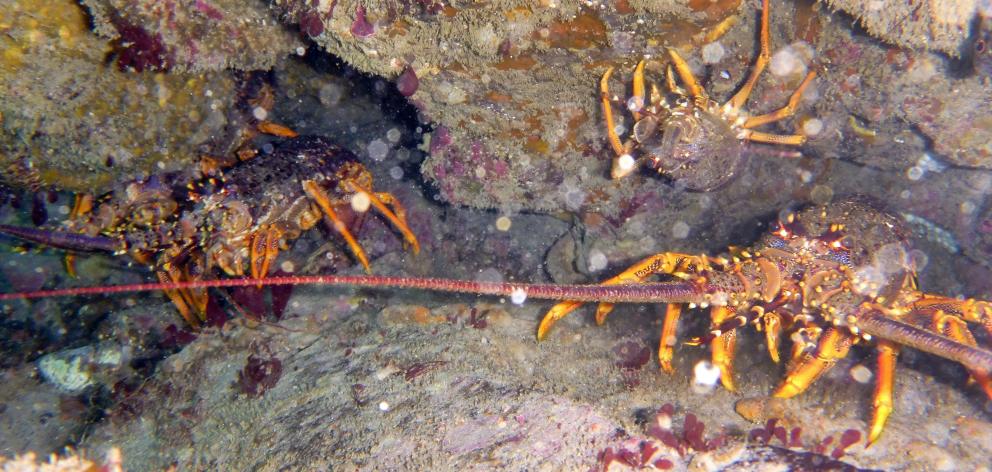Plus
You are not permitted to download, save or email this image. Visit image gallery to purchase the image.

At a record price of $139 a kg for the year to March 31, New Zealand’s rock lobsters are the rock stars of the export industry.
The Ministry for Primary Industries’ recently released Situation and Outlook for Primary Industries report showed rock lobster exports hit a record $371 million in that period.
About $167 million of those exports came from the CRA8 quota management area, which encompasses South Westland, Fiordland, Stewart Island, Foveaux Strait and neighbouring areas.
About 45% of national rock lobster production was derived from CRA8, at 1251 tonnes, and a “very large” percentage of those export values was returned to the local economies of southern New Zealand, CRA8 Rock Lobster Industry Association chief executive Malcolm Lawson said.
After three years of dealing with the effects of Covid-19 and, more recently, marine heatwaves, the CRA8 commercial rock lobster industry had recovered, Mr Lawson said.
China was the main market for New Zealand’s rock lobster and the Chinese Government’s moves to combat Covid through 2020 to early 2023 had a significant impact on the industry, as the market opened and closed, often without any forward notice.
Despite that, the industry had continued to improve its profitability and that was a reflection of the very high abundance of the fishery and the efforts of exports over that time as the industry was able to react when opportunities arose, he said.
Marine heatwaves in 2022 and 2023 resulted in coastal temperatures being significantly higher than normal, which meant lobsters did not have their usual vitality or strength, Mr Lawson said.
As the climate switched from a La Nina pattern to the expected El Nino, the temperatures had returned to normal but some lingering effects had been seen recently on the South Westland coast, he said.
The association was collaborating with the University of Otago on a study into the effects of heat stress on lobsters.
“While the La Nina weather pattern has now dissipated, there is no doubt it will return and the industry is keen to learn as much as we can now so that we know more of what to expect when it does return,” he said.
The fishing year for rock lobster ran from April 1 to March 31. Catches for the first two months of the 2023-24 fishing year were 338 tonnes, or 31% of the total allowable commercial catch for CRA8 for the fishing year.
The April total of 224 tonnes was the highest for that month for at least 20 years. That was a reaction to a strong return of market demand as Covid restrictions had been dropped in China. A more normal market pattern was now prevailing.
Chanel Gardner, the executive officer of the Otago Rock Lobster Industry Association, said the season in CRA7 had started well and crayfish stocks were continuing to thrive, which was great for iwi, commercial and recreational fishers.
The Otago association was very interested in the marine heatwave impact studies at the university. It also had a good relationship with the university and was exploring additional research with the institution.
The Situation and Outlook for Primary Industries report said seafood export revenue was forecast to increase 8% to $2.1 billion for the year to June 30, 2023, driven by high prices.
The expected higher seafood prices were supported by tight global supply, strong demand recovery due to the reopening of the food service industry and a weakened New Zealand dollar against the United States dollar.
Export volumes were expected to drop 8% to nearly 239,900 tonnes for the year to June 30, due to various challenges including weather, supply chain and workforce issues affecting production and processing of fish.
A significant increase in input costs, specifically higher than average fuel prices, was dampening the profitability of businesses.
Ongoing freight issues and uncertainty around the accessibility of key markets remained a concern in the short term.
Future growth of the seafood industry would face challenges from climate change, and the ongoing transformation of aquaculture was crucial for its future expansion. Rock lobster, mussels, hoki and salmon accounted for 53% of total seafood exports in 2023.
sally.rae@odt.co.nz
SUBSCRIBER
SUBSCRIBER
SUBSCRIBER
SUBSCRIBER
